Case 1
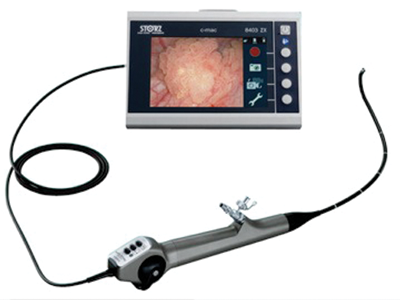
Figure A.
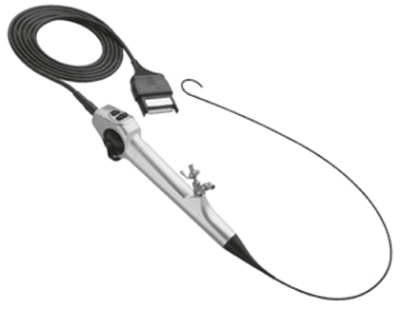
Figure B.
- What is shown in figures A and B?
- What is the diameter of each scope?
- What is the working channel size of each?
- What are the advantages of a digital versus optic flexible ureteroscope?
Case 2
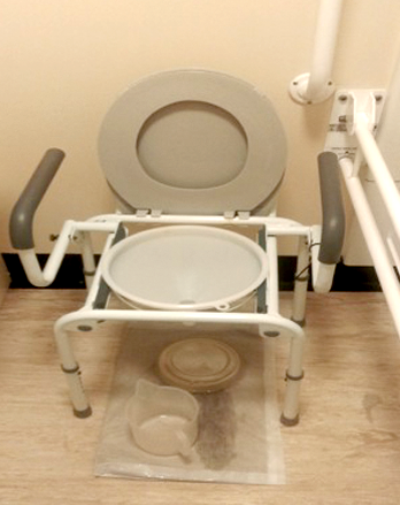
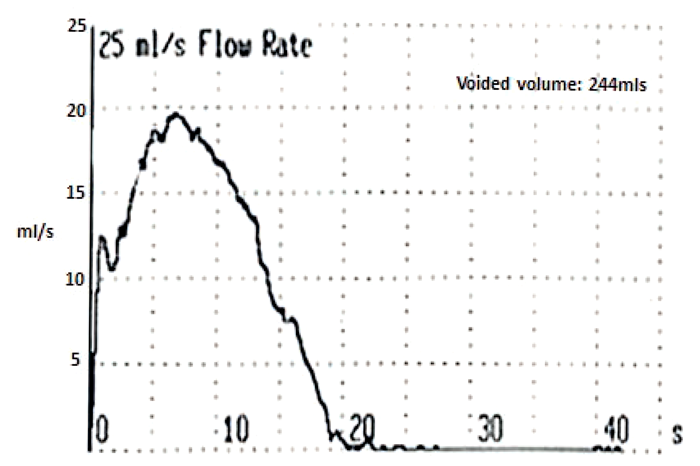
- What is this machine?
- What are the different methods of its operation?
- Calculate the following uroflow parameters: voided volume (Vcomp), voiding time (T100), maximum flow (Qmax).
- What is the probability of obstruction with a Q-max of <10ml/s, 10-15ml/s and >15ml/s?
Case 3
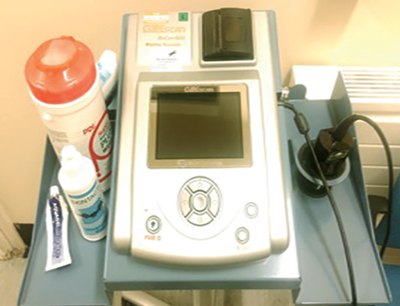
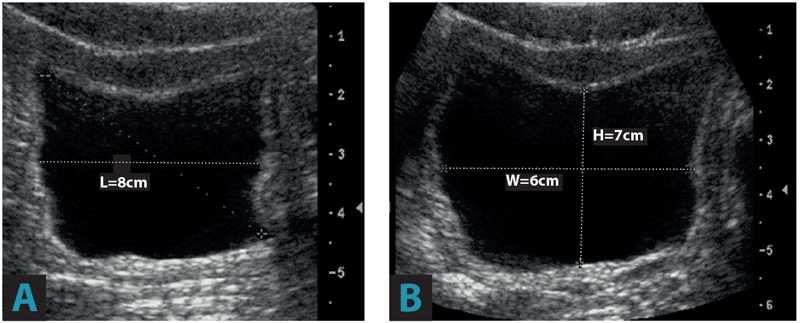
- What is this machine?
- How does it calculate volume?
- Calculate the urine volume from the ultrasound images A and B.
Technology – answers
Case 1
-
A: Video flexible cystoscopy (Karl Storz C-VIEW). B: Video uretero-renoscope (Karl Storz Flex XC).
-
A: Video flexible cystoscopy is 16Fr. B: Video uretero-renoscope is 8.4Fr.
-
A: Video flexible cystoscopy is 8.4F. B: Video uretero-renoscope is 3.6Fr.
-
Improved vision translates to more efficient stone fragmentation with a significant reduction in flexible ureterorenoscopy time and overall operative time.
Case 2
-
Uroflowmetry machine.
-
Gravimetric principle: weight of urine is the urine volume and by differentiation the flow rate. Momentum flux principle: a rotating disk slows as urine falls on it. The power required to maintain a constant disc speed is used to calculate urine flow. Capacitance principle: electrical capacitance of a metallic strip in a urine collecting chamber of standard size changes with the height of urine as it fills.
-
Vcomp = 244ml, T100 = 20s, Qmax = 20ml/s.
-
Approximately: 90% with Qmax <10ml/s, 60% with Qmax between 10-15ml/s and 30% with a Qmax >15ml/s.
Case 3
-
Ultrasound bladder scanner.
-
By taking measurements in two planes, and deriving length, width and height measurement, bladder volume can be calculated. This utilises the prolate ellipsoid formula (π/6 x L x H x W). This is relatively simple and easy to use.
-
(π/6 x L x H x W) or more simply (0.52 x L x H x W) (prolate ellipsoid formula) = 175mls.
For Part 1 of this topic click here.
For Part 2 of this topic click here.




